February 14, 2022 - Shark Valley, Florida
|
| We continued east on Highway 41 to Shark Valley Tram Tours. From this place, you can take a tram tour south into the Everglades. You can ride bikes or hike on the paths as well. It's quite popular. Lynnette and I had some time to kill before our tram tour so we walked around a little. |
| |
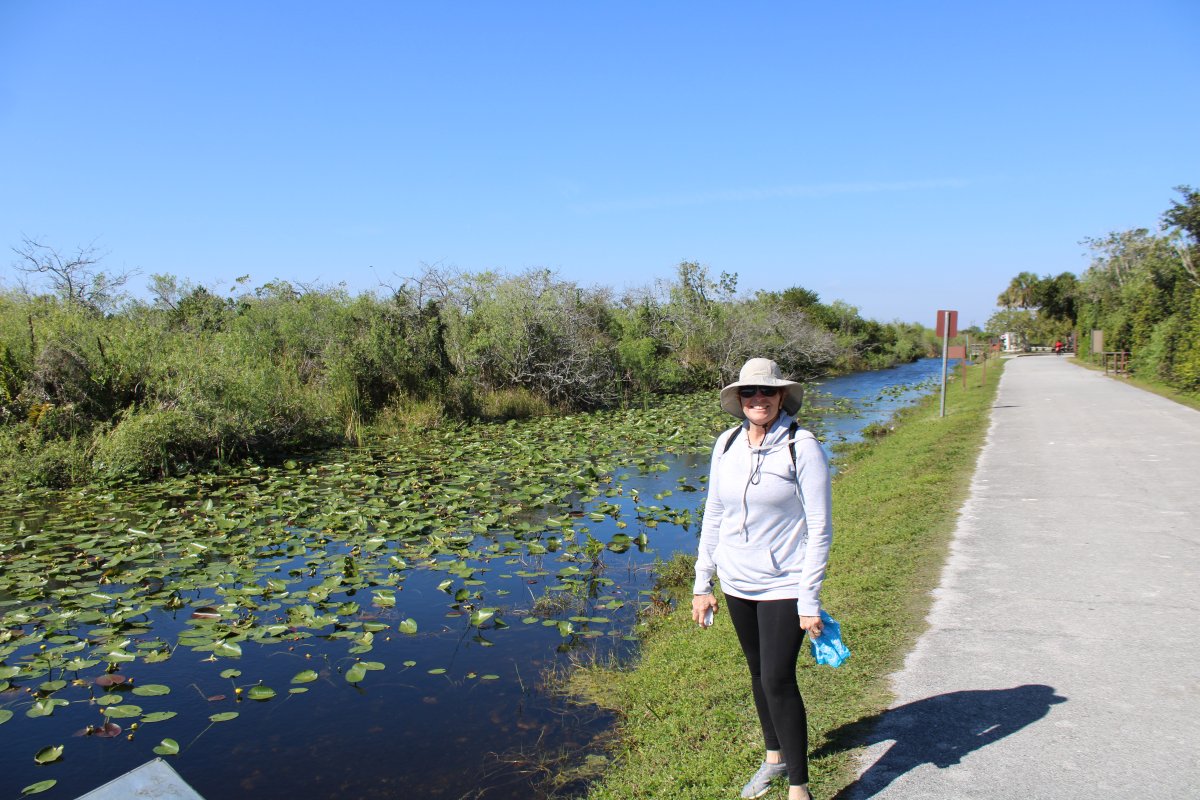 |
|
|
Majestic Great Blue Heron.
|
| |
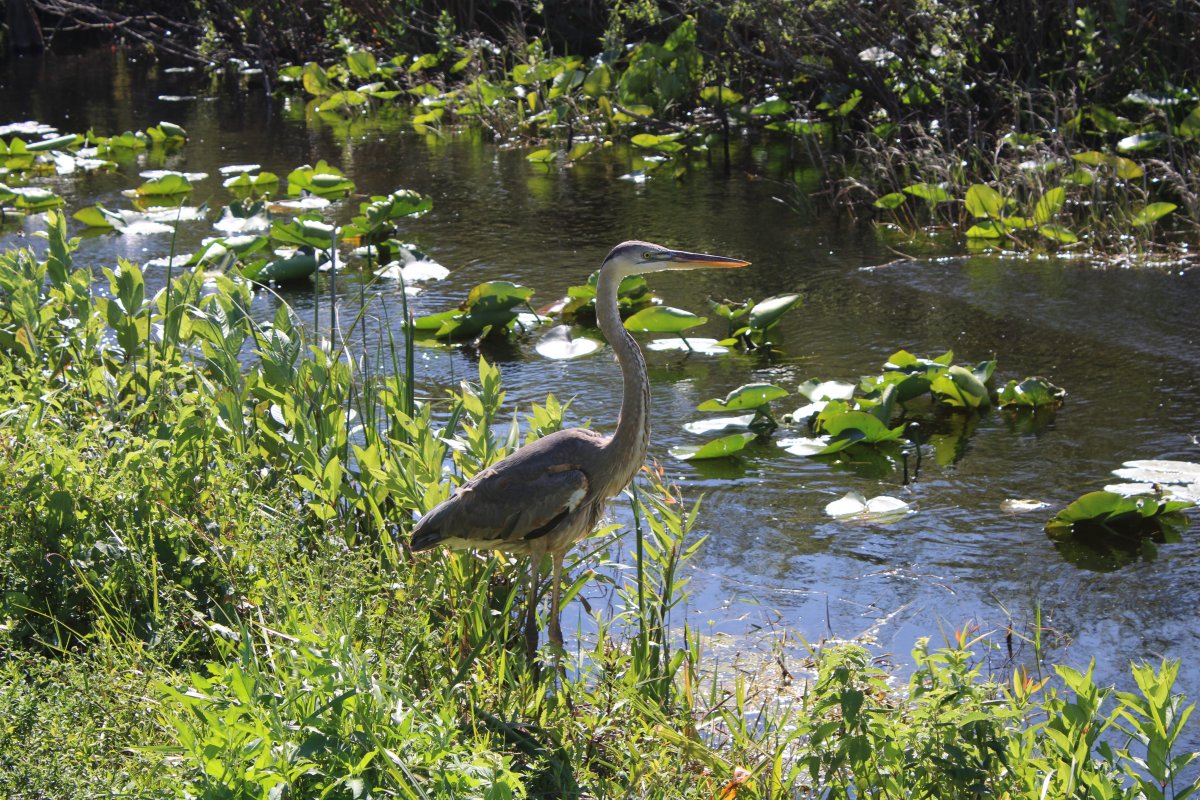 |
|
|
A young gator enjoying the warmth of the sun.
|
| |
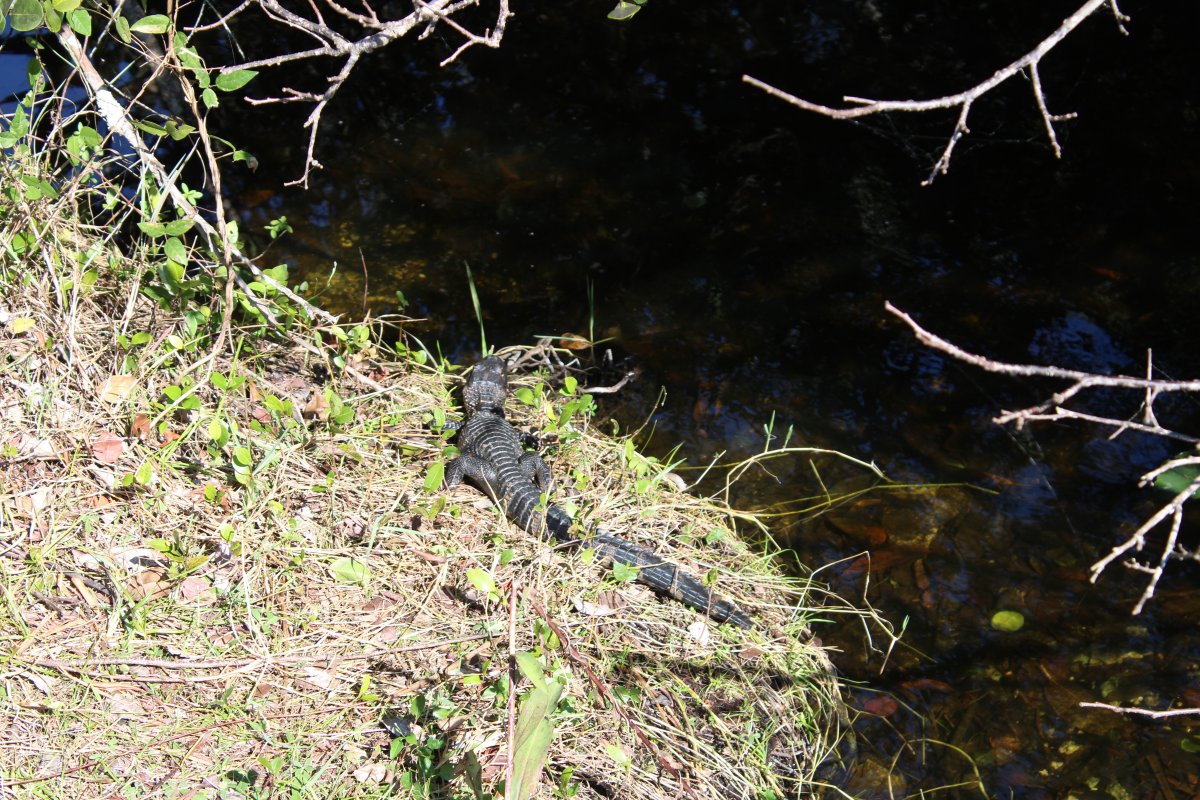 |
|
| Some big fish hovering in the canal. |
| |
 |
|
| A big guy checking us out. |
| |
 |
|
| I think he's used to people. |
| |
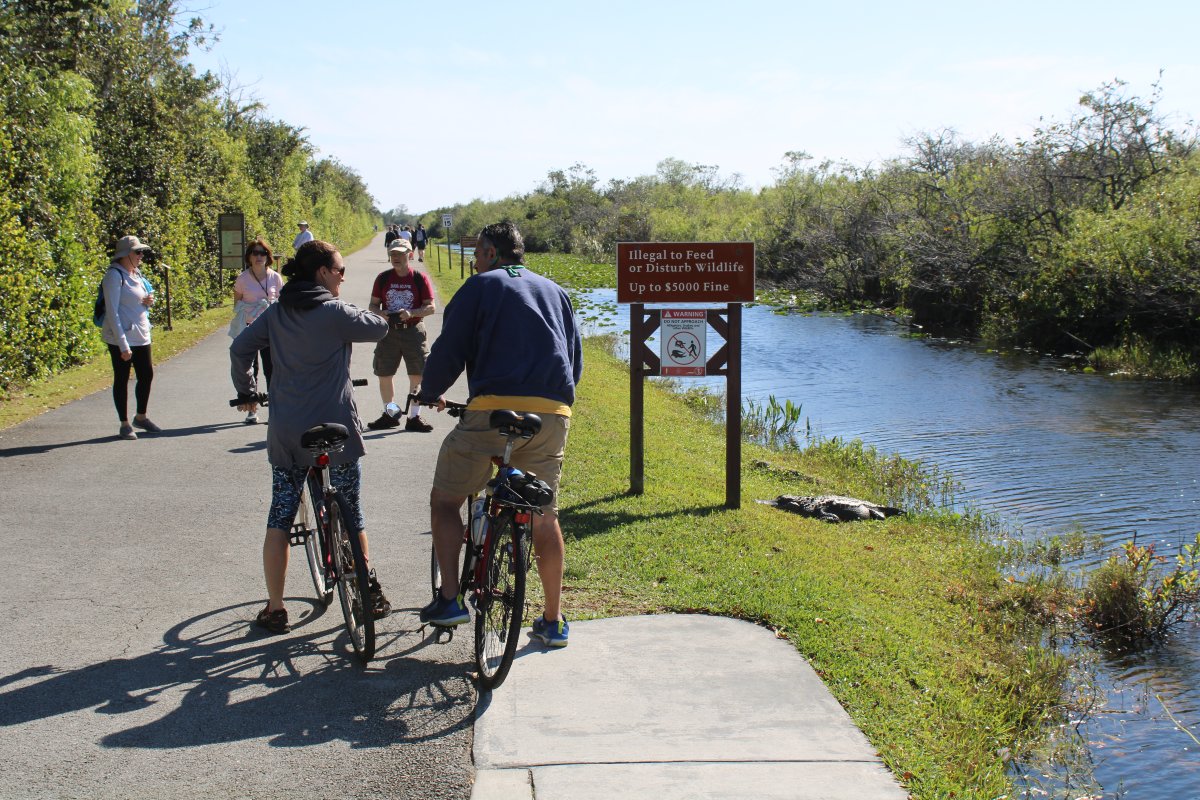 |
|
|
Starting out on the tram.
|
| |
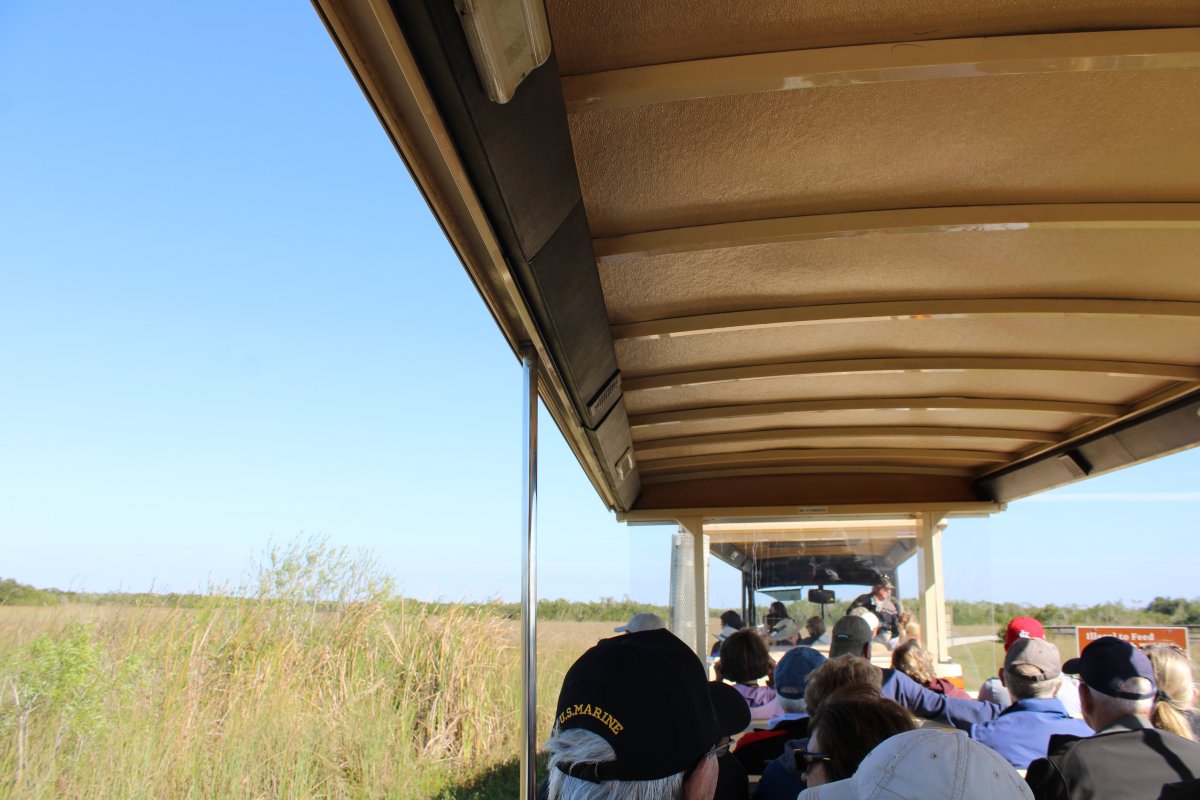 |
|
| The guide pointed out some baby gators in the marsh. There are at least three. Can you pick them out? |
| |
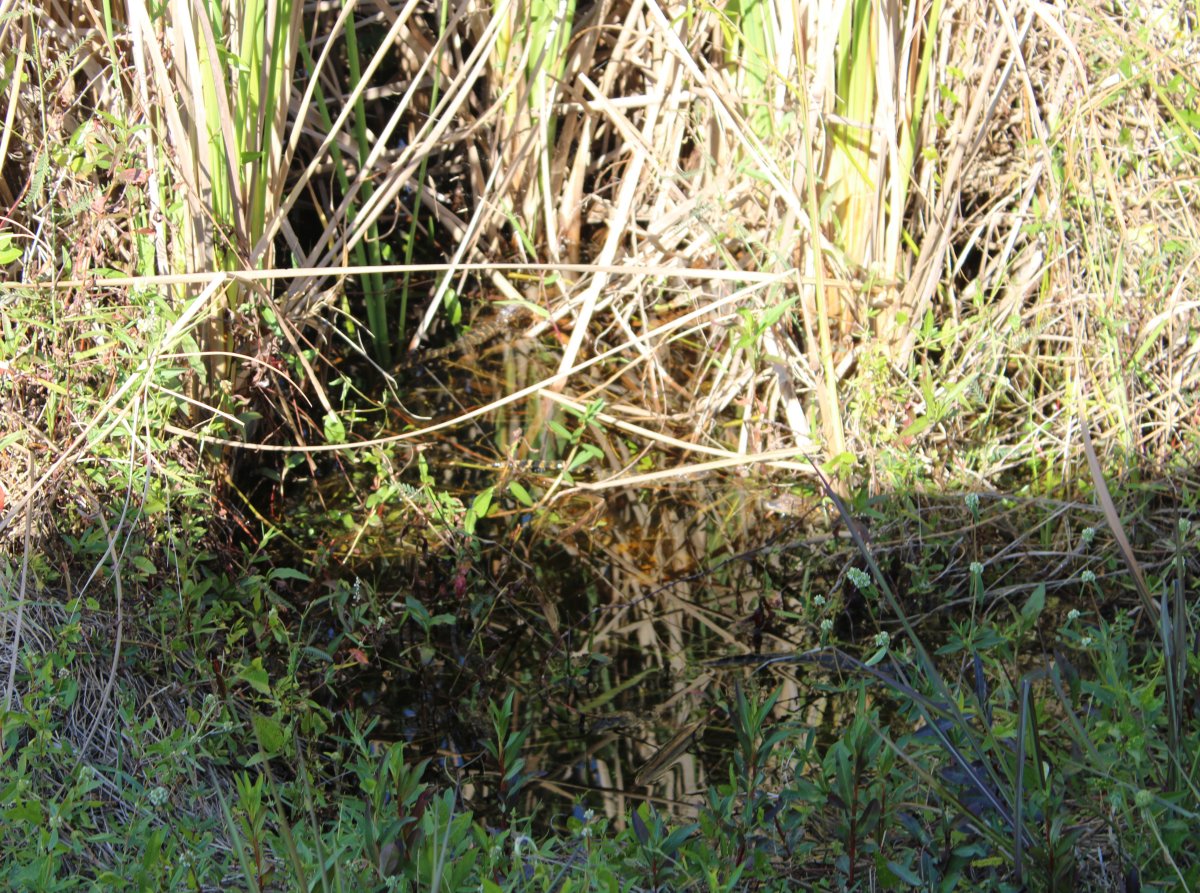 |
|
|
Here's a hint.
|
| |
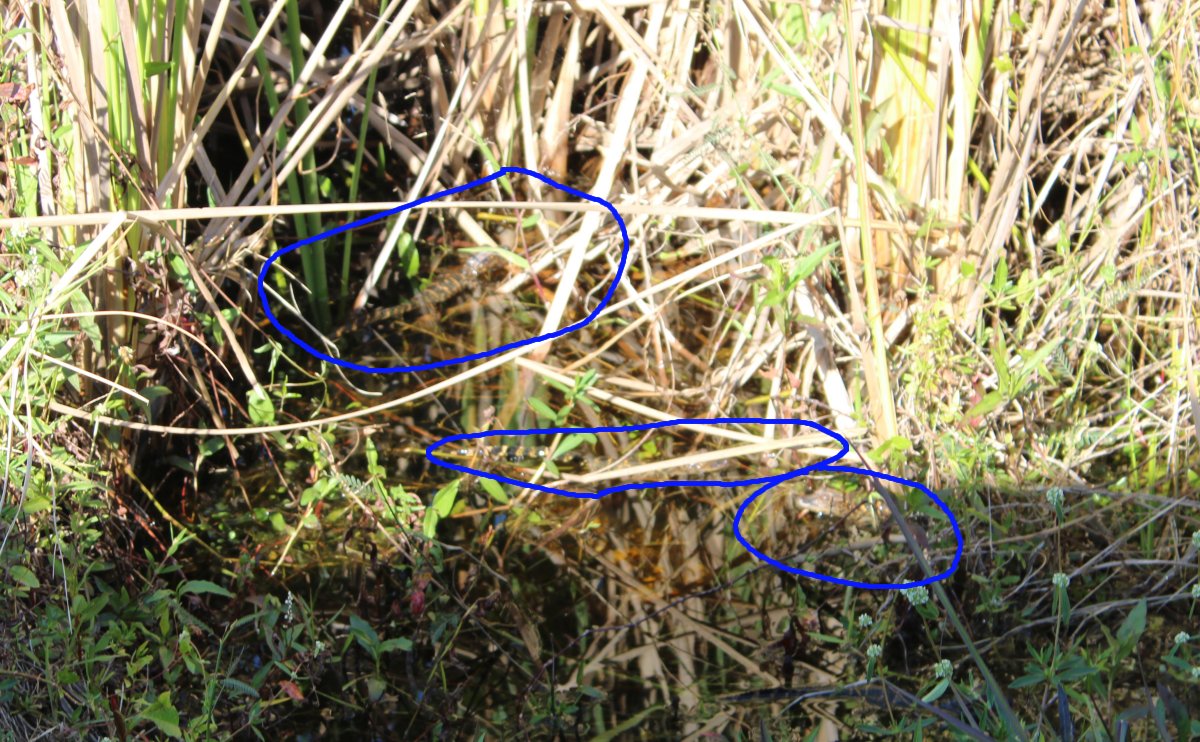 |
|
|
The primary feature of the Everglades is the sawgrass marsh, pictured here.
The iconic water and sawgrass combination in the shallow river 100 miles long and 60 miles wide that spans from Lake Okeechobee to Florida Bay is often referred to as the "true Everglades" or just "the Glades".
|
| |
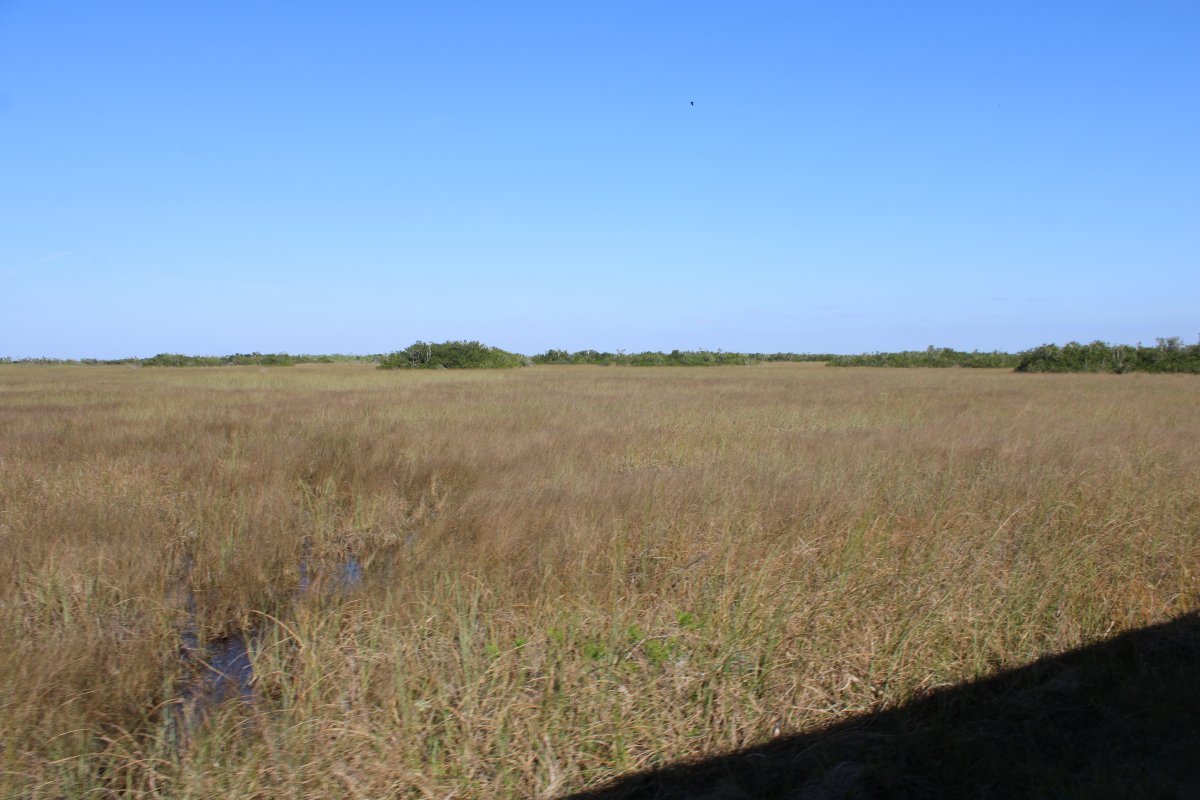 |
|
| Sloughs, or free-flowing channels of water, develop in between sawgrass prairies. Sloughs are about 3 feet deeper than sawgrass marshes, and may stay flooded for at least 11 months out of the year and sometimes multiple years in a row. Aquatic animals such as turtles, alligators, snakes, and fish thrive in sloughs; they usually feed on aquatic invertebrates. Submerged and floating plants grow here. Major sloughs in the Everglades system include the Shark River Slough flowing out to Florida Bay, Lostmans River Slough bordering The Big Cypress, and Taylor Slough in the eastern Everglades. |
| |
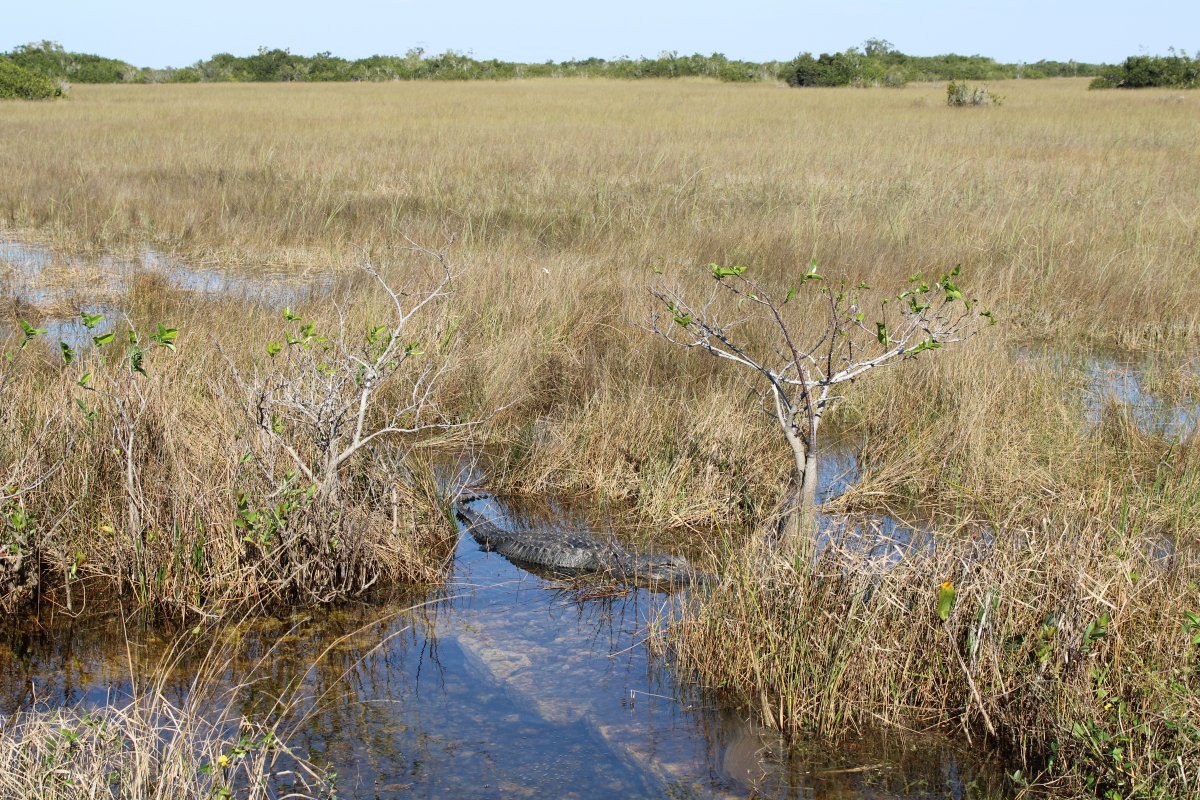 |
|
| |
| |
 |
|
|
Small islands of trees growing on land raised between 1 foot and 3 feet above sloughs and prairies are called tropical hardwood hammocks. They may range from one to ten acres in area, and appear in freshwater sloughs, sawgrass prairies, or pineland. Hammocks are slightly elevated on limestone plateaus risen several inches above the surrounding peat, or they may grow on land that has been unharmed by deep peat fires. Hardwood hammocks exhibit a mixture of subtropical and hardwood trees, such as Southern live oak, gumbo limbo, royal palm , and bustic that grow in very dense clumps. Near the base, sharp saw palmettos flourish, making the hammocks very difficult for people to penetrate, though small mammals, reptiles and amphibians find these islands an ideal habitat. Water in sloughs flows around the islands, creating moats. Although some ecosystems are maintained and promoted by fire, hammocks may take decades or centuries to recover. The moats around the hammocks protect the trees. The trees are limited in height by weather factors such as frost, lightning, and wind; the majority of trees in hammocks grow no higher than 55 feet.
Here some nice Hammock examples.
|
| |
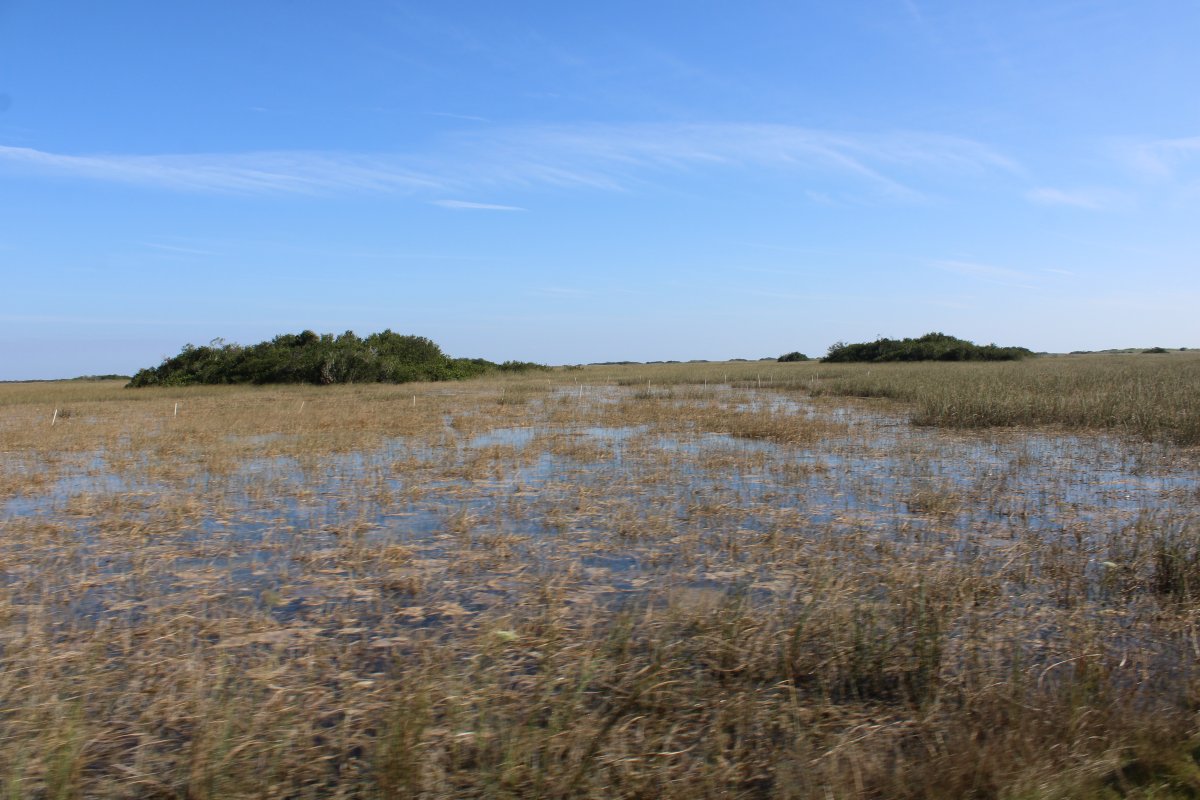 |
|
|
Native to southern Asia, the Burmese python is a relatively new invasive species in the Everglades. This species can grow up to 20 feet long. Florida wildlife officials speculate that escaped pythons have begun reproducing in an environment for which they are well-suited. They wipe out the mammal population wherever they are located, and are extrememly difficult to hunt.
We didn't see any pythons but we did see a variety of wetland birds of all sizes, including this Great Egret.
|
| |
 |
|
|
Alligators have created a niche in wet prairies. With their claws and snouts they dig at low spots and create ponds free of vegetation that remain submerged throughout the dry season. Alligator holes are integral to the survival of aquatic invertebrates, turtles, fish, small mammals, and birds during extended drought periods. The alligators then feed upon some of the animals that come to the hole.
The tram slows down or stops whenever there is a gator, bird or something of interest. The Ranger guide explains it all.
|
| |
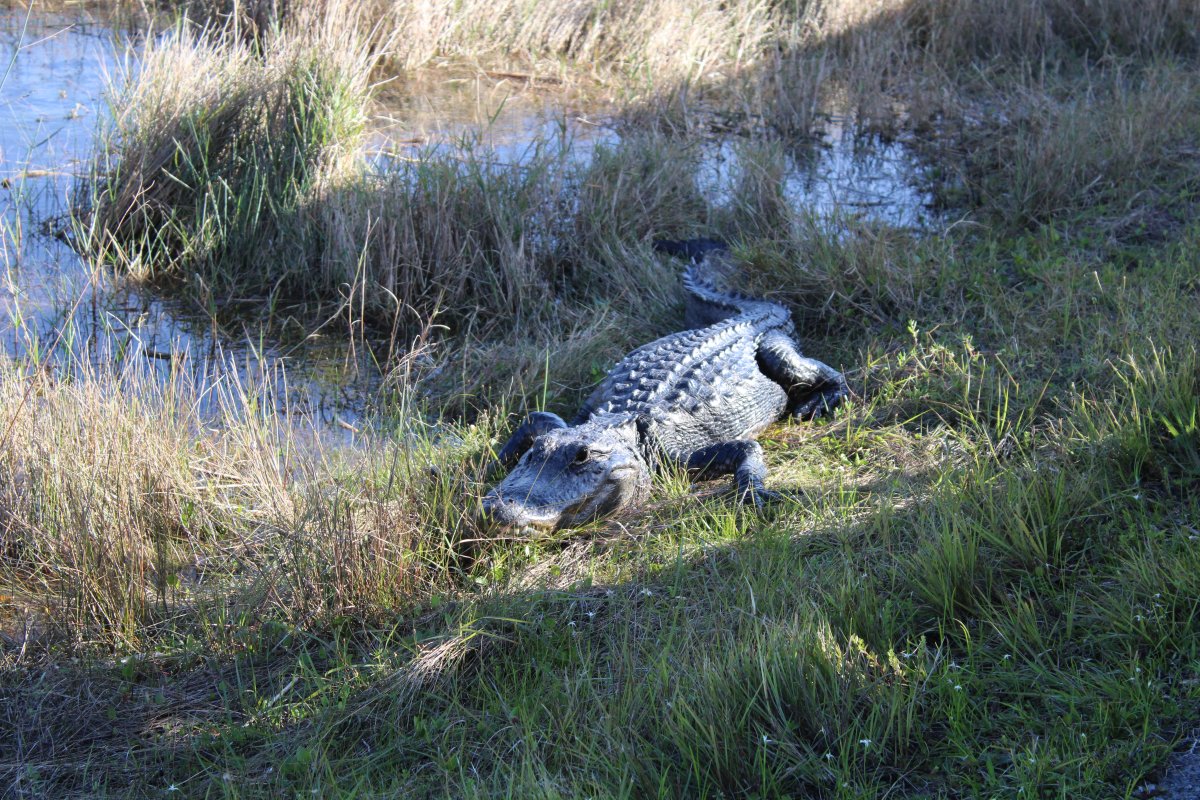 |
|
|
Say cheese!
I was amazed at how close the tram came to some gators. I guess there have been no cases of the gators leaping at the tram and grabbing on to a tourist. We saw so many alligators right by the side of the road.
|
| |
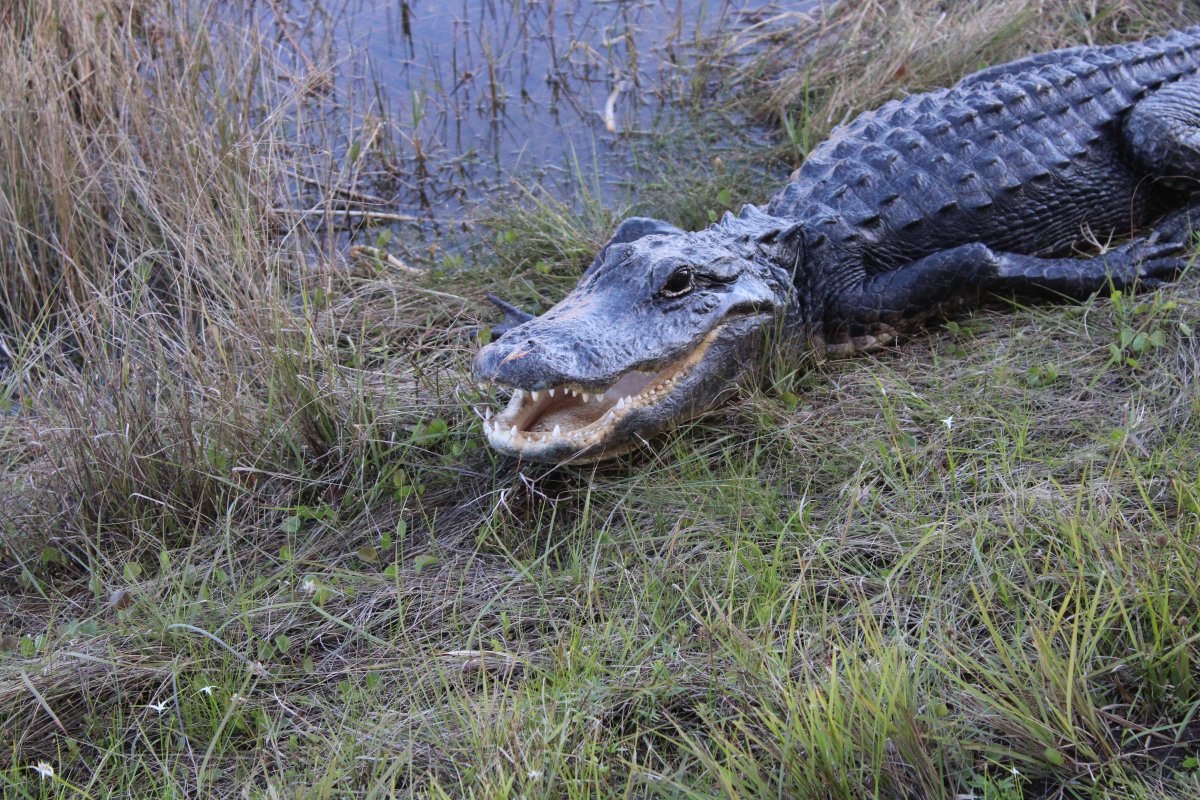 |
|
|
After a 20-minute or so ride south, we reached the Observation Tower.
|
| |
 |
|
| A big crocodile cruises in the river below the observation tower. |
| |
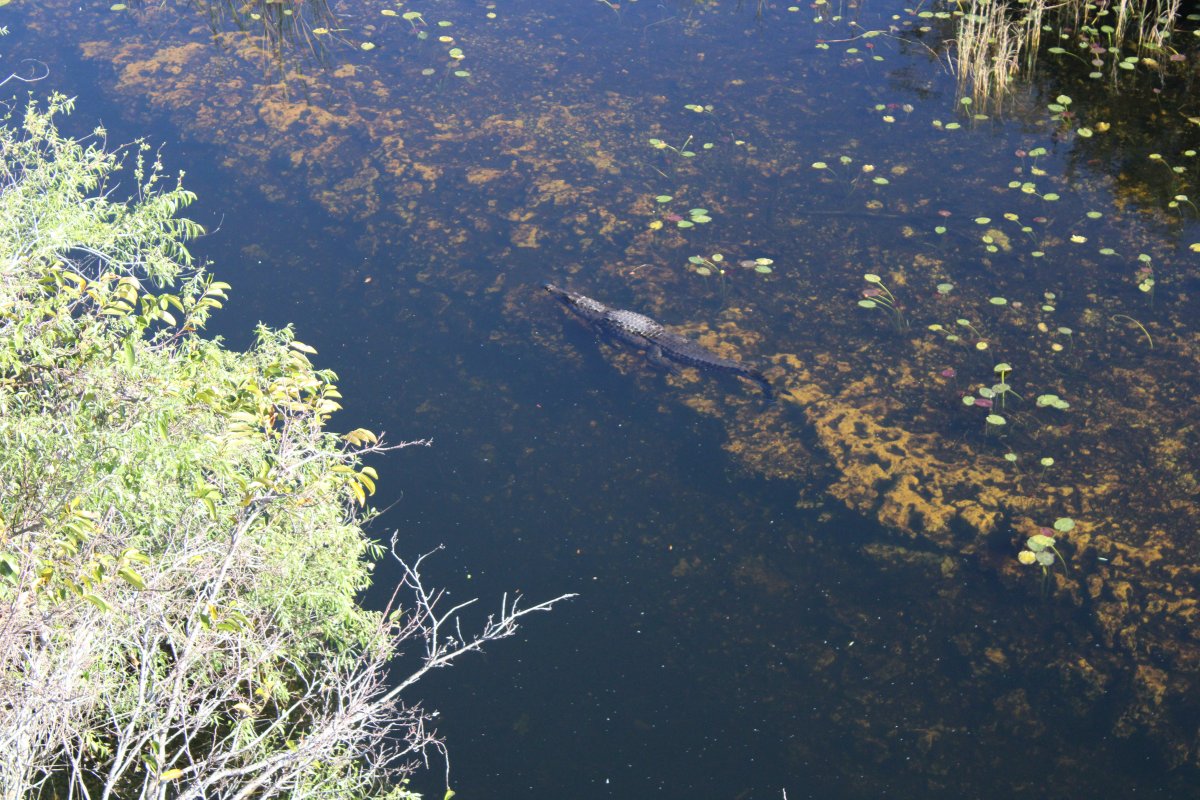 |
|
|
From the top of the observation tower you have a beautiful view of Everglades National Park.
|
| |
 |
|
| A circular walkway takes you to the top of the observation tower. |
| |
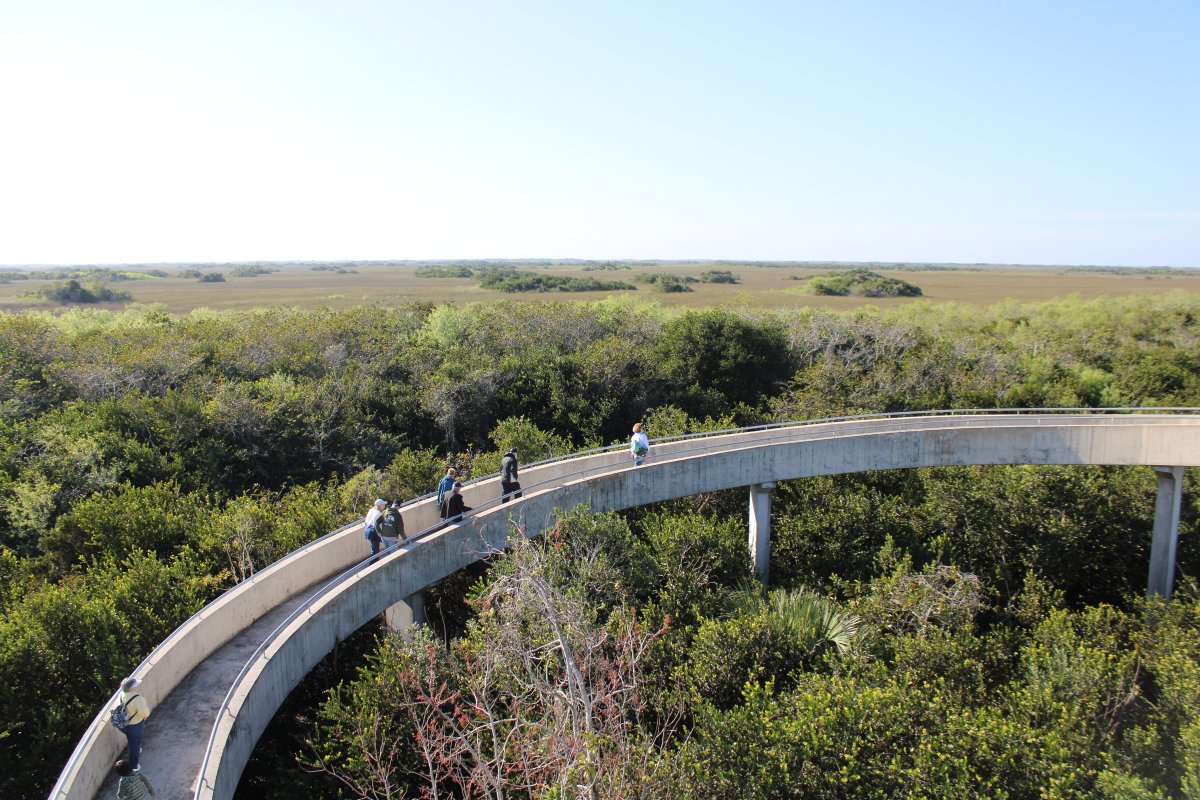 |
|
|
Looking north at the tram/bike trail. We came in on the trail to the right but will leave on the trail straight ahead. Yes, it's a loop.
|
| |
 |
|
| |
| |
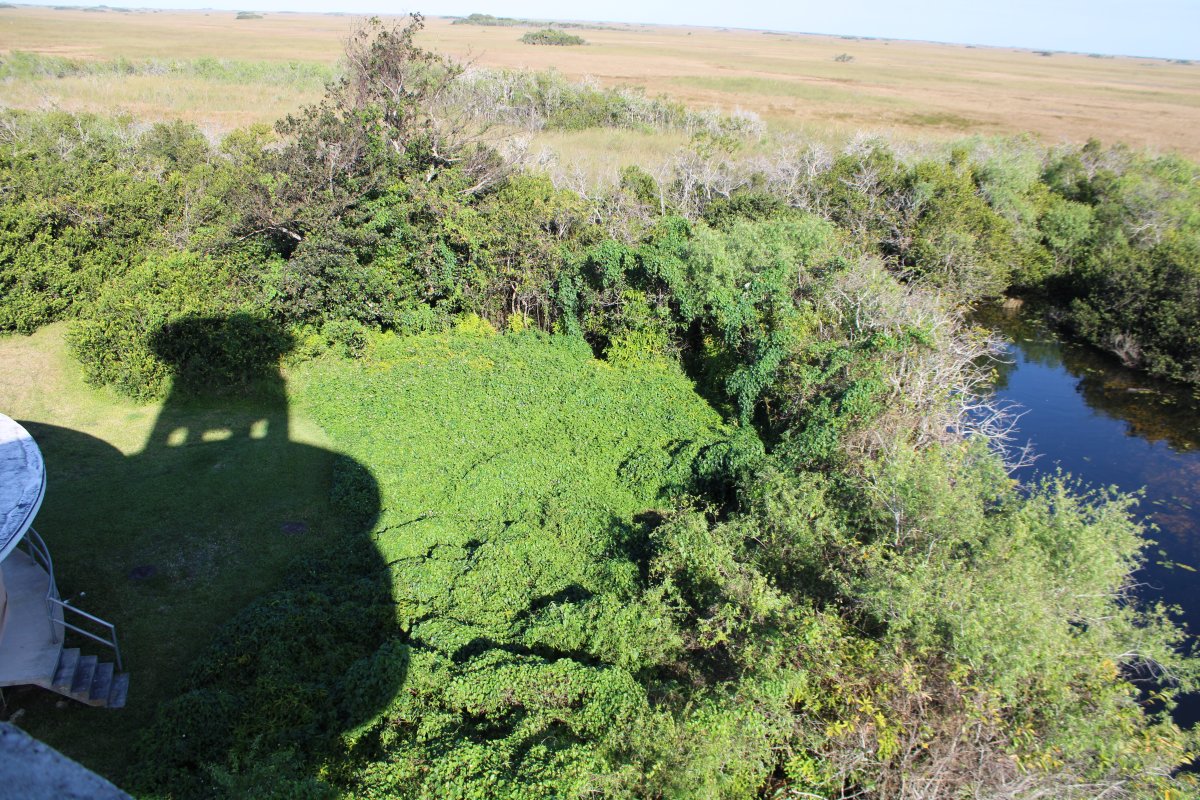 |
|
| A good look at the observation tower. The tram tour gave us about 20 minutes to hang out here. |
| |
 |
|
| Another Great Blue Heron. |
| |
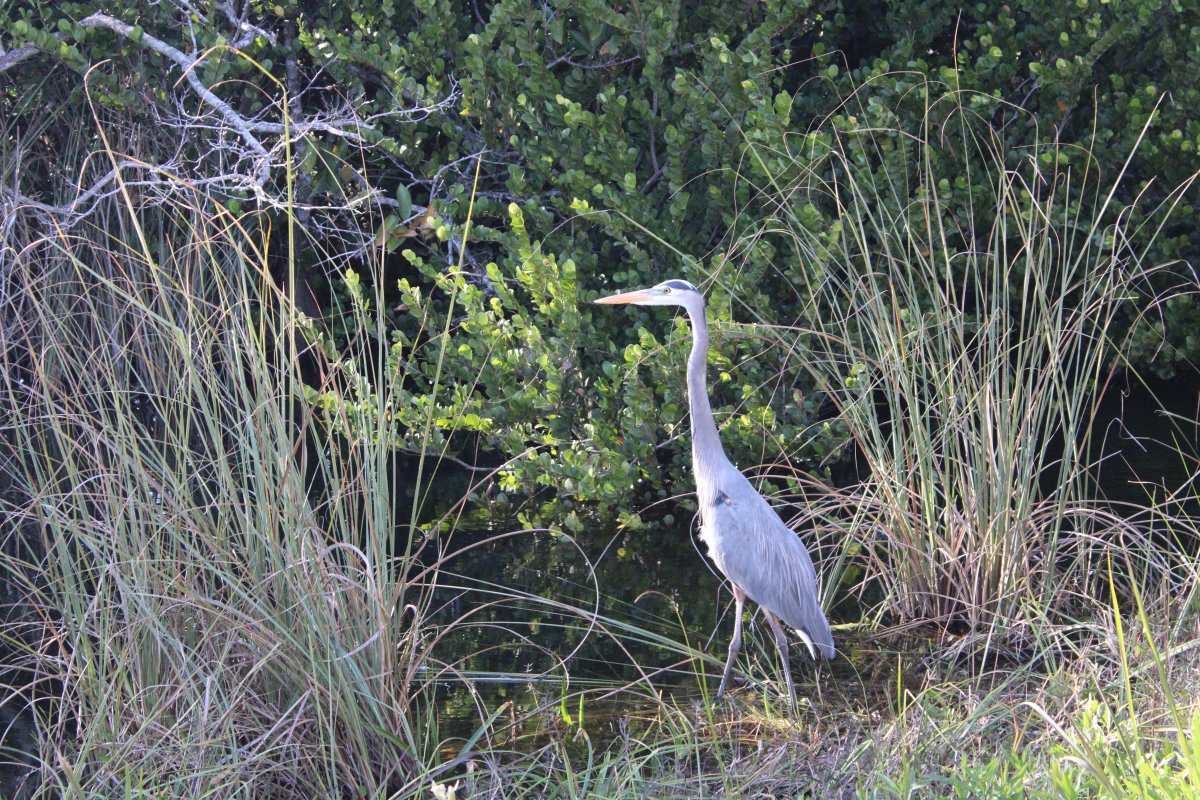 |
|
|
Backside of a large gator.
|
| |
 |
|
|
Another friendly guy at the side of the path.
|
| |
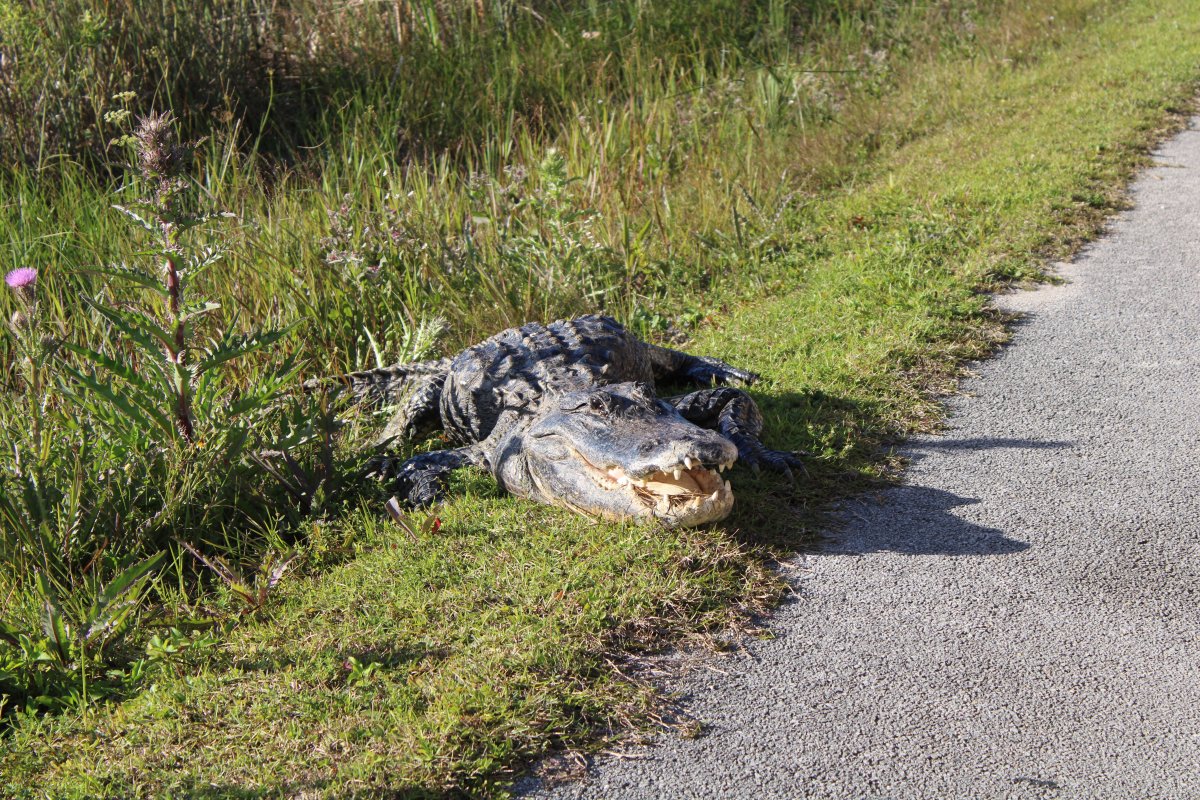 |
|
| Just happy to see us. |
| |
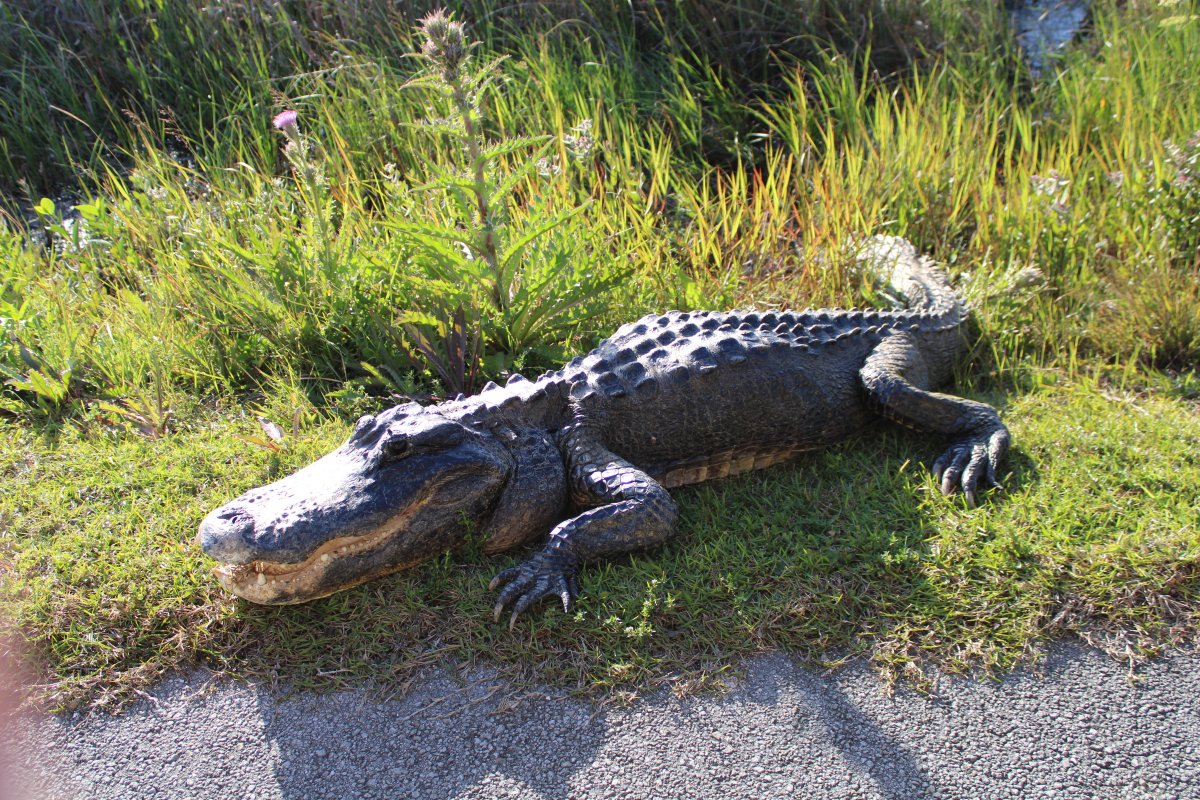 |
|
|
Nice looking Woodstork.
|
| |
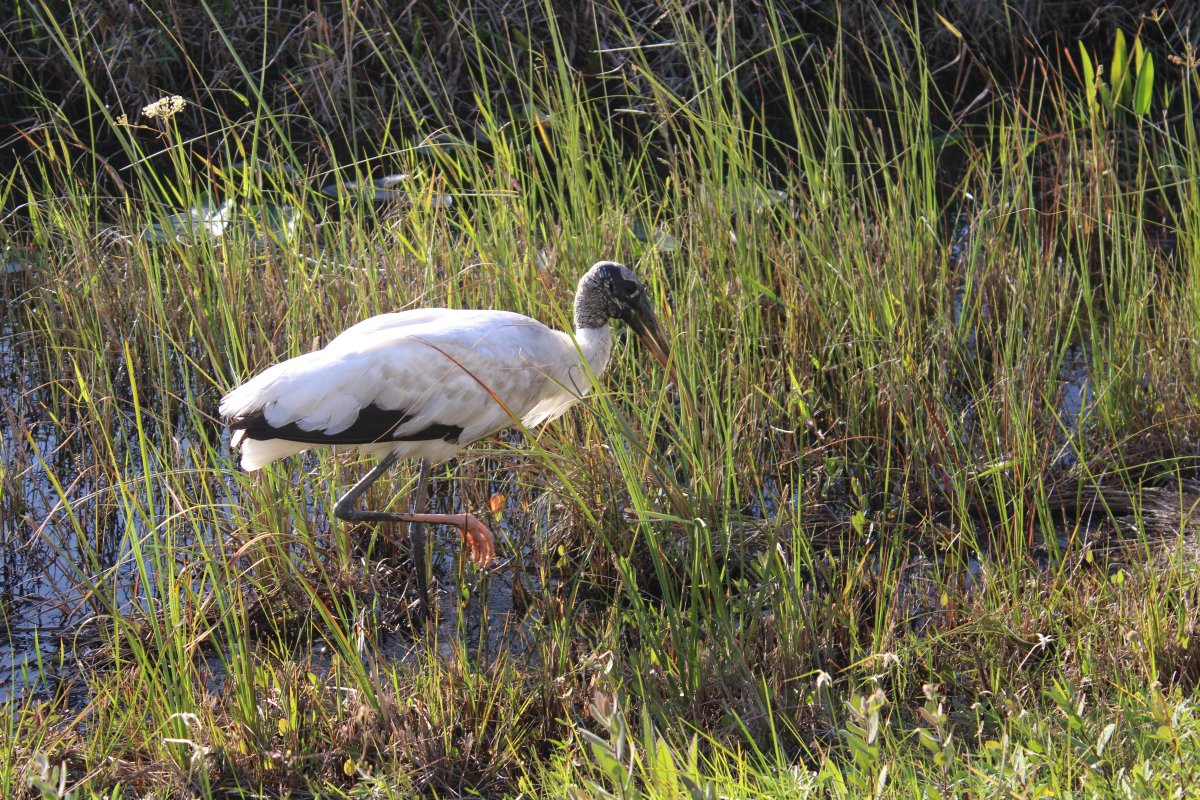 |
|
|
Nice map of the Everglades, and showing our position.
If you want to see the Everglades, I'd definately recommend stopping at Shark Valley and taking the tram tour.
|
| |
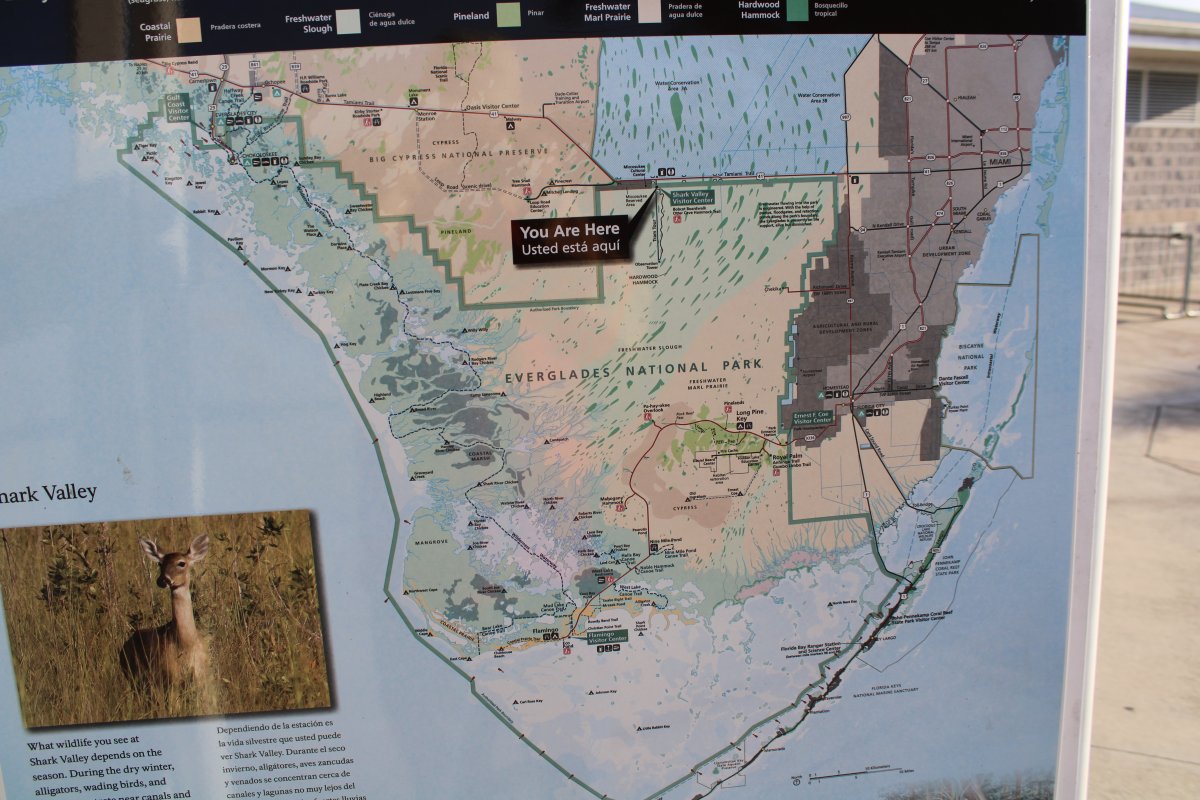 |
|
| |
| |
|
|
|
|
|
|




























